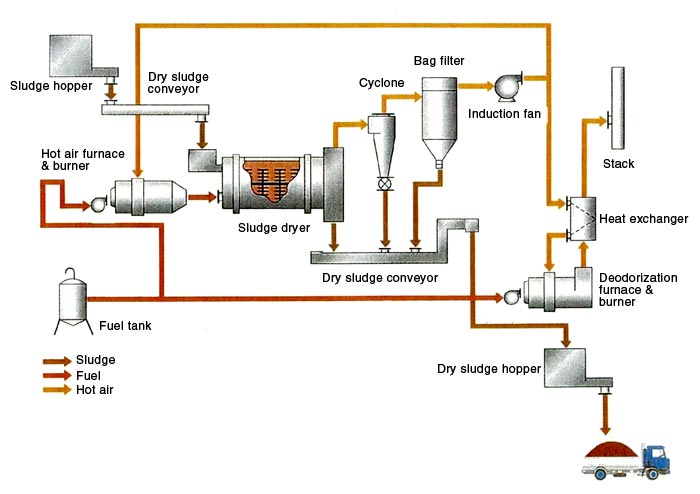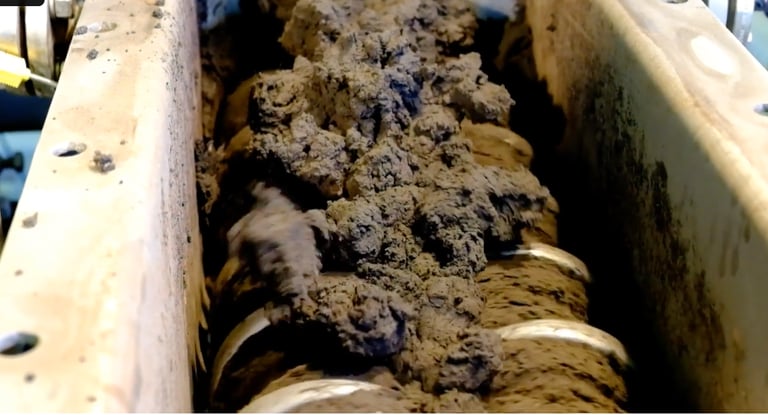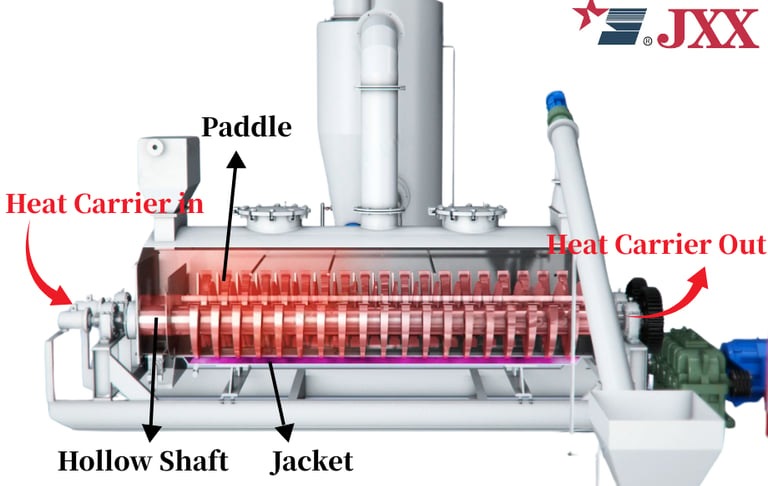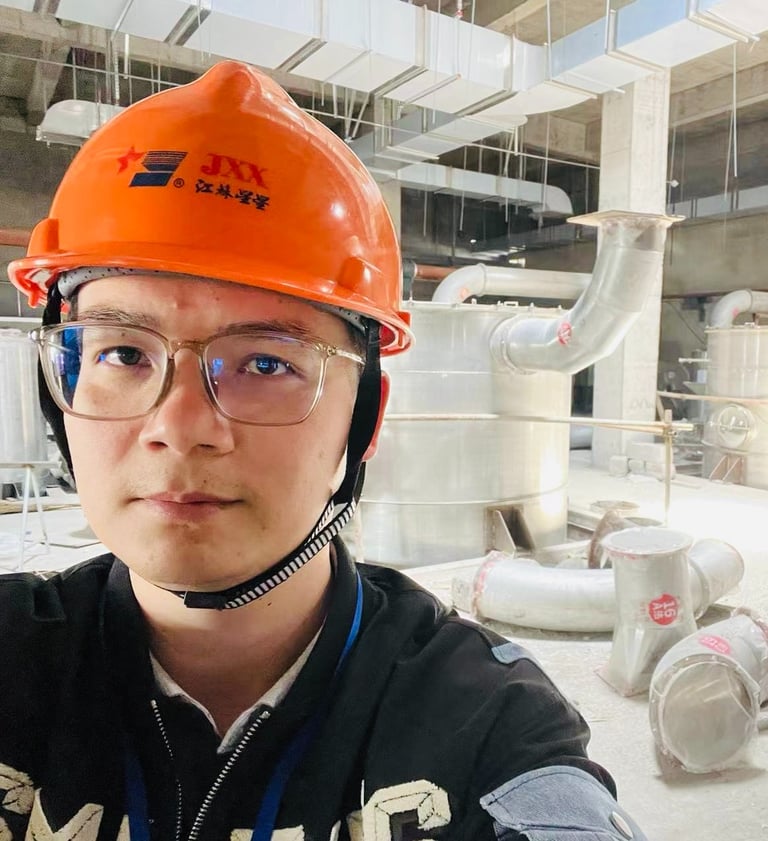How Can Paddle Dryers Revolutionize Sludge Drying in Industrial Applications?
Blog post description.
2/24/20254 min read


Sludge drying is a critical yet energy-intensive step in waste management, especially for industries dealing with municipal or industrial wastewater. Traditional drying methods often struggle with high viscosity, energy inefficiency, and inconsistent output. Enter paddle dryers—a compact, energy-efficient solution designed to tackle sludge’s sticky phase and deliver uniform dryness. At JexDry, we’ve engineered paddle dryers that not only overcome these challenges but also slash operational costs. Let’s explore how our technology works and why it’s a game-changer.
JexDry’s paddle dryer reduces energy consumption by up to 40% compared to conventional methods, achieving 95% dryness with patented two-stage heating. Discover how our recent project for a Chinese chemical plant transformed their sludge management.
Before diving into the technical details, let’s address the key questions industrial clients ask:
How do paddle dryers handle sludge’s sticky phase?
What makes JexDry’s design more efficient?
Can this technology scale for large facilities?
Table of Contents


1. Why Choose Paddle Dryers for Sludge Drying?
Sludge transitions into a highly viscous, elastic state when dried to ~40% solids, drastically increasing mechanical resistance and energy demands . Paddle dryers excel here by combining indirect heating and mechanical agitation to break through this “sticky zone” efficiently.
Unlike rotary dryers, paddle dryers operate with 90% thermal efficiency and minimal exhaust emissions—ideal for eco-conscious industries.
Paddle dryers use hollow paddles filled with steam or thermal oil to transfer heat directly to sludge. This design minimizes heat loss and accelerates drying by maintaining constant agitation, preventing material clumping . Advanced models, like JexDry’s, even recover waste heat from exhaust steam to preheat incoming sludge, cutting energy use by 15–20%.
Sticky Phase
2. How Does JexDry’s Paddle Dryer Outperform Competitors?
JexDry integrates adaptive thermal controls and a dual-stage drying process to optimize energy use. Our system adjusts steam flow, pressure, and temperature in real-time based on incoming sludge moisture and target dryness .
A 2024 pilot project showed JexDry’s dryer achieving 95% solids in 8 hours—30% faster than industry averages.
Key innovations include:
Self-cleaning paddles: Prevent material buildup and ensure consistent heat transfer .
Modular design: Scales from 50 kg/h (lab units) to 20 tons/h (industrial) .
Closed-loop systems: Capture solvents and reduce VOC emissions, complying with strict environmental standards .


3. Case Study: Sludge Volume Reduction in a Chicago Wastewater Plant
In 2022, the Metropolitan Water Reclamation District of Greater Chicago (MWRD) collaborated with JexDry to retrofit their sludge drying system. Facing strict EPA compliance deadlines and rising disposal costs, the plant aimed to process 50 wet tons/day of municipal sludge (25% solids) into Class A biosolids for agricultural reuse.
Results: 35% lower energy costs, 90% solids achieved in 7 hours, and $220,000/year saved in landfill fees.
Key Achievements:
Pathogen Reduction: Achieved EPA 503 Class A standards via 70°C sustained heating in paddles.
Heat Recovery: Reused 18% of exhaust heat to pre-thicken sludge, cutting natural gas use by 25%.
Community Impact: Odor control through closed-loop steam condensation improved local ESG ratings.

4. Key Features of JexDry’s Paddle Dryer
Low Maintenance: Robust construction with OEM spare parts ensures <1% downtime .
Customizable Heating: Supports steam, thermal oil, or hot water based on facility needs .
Smart Controls: IoT-enabled sensors monitor moisture and adjust parameters autonomously.
Conclusion
JexDry’s paddle dryers offer a sustainable, cost-effective solution for sludge drying, backed by proven results and adaptable designs. Whether you’re processing municipal wastewater or industrial sludge, our technology delivers unmatched efficiency and ROI.
External Links Recommendation
Boost Your Drying Efficiency by 30% Talk to Our Engineers Now!


I’m Zar Zha, founder of jexdry.com, a trusted Chinese drying equipment manufacturer rooted in precision engineering since 1998.
As a family-owned business built on three generations of industrial innovation, we specialize in customized drying solutions for demanding industries like food processing, pharmaceuticals, and chemical production.
Over the past 25+ years, we’ve empowered 80+ countries and 200+ global clients—from Fortune 500 food giants to sustainable biofuel startups—to optimize their drying efficiency, reduce energy waste, and scale production safely.
At JexDry, we’re more than equipment suppliers; we’re partners in solving industrial drying challenges. I’m sharing decades of hands-on experience here to help engineers and plant managers master drying technology, avoid costly mistakes, and future-proof their operations.
Feel free to leave your information below, and we’ll get back to you as soon as possible. Alternatively, you can click the green WhatsApp button at the bottom of the page to contact us directly.
JexDry is a family-run business established in 1998, dedicated to providing customers with the most suitable drying equipment to make their production work more efficient, smooth, and environmentally friendly.
Products
Contact
+86-137-7501-3369
© 2024. All rights reserved.
